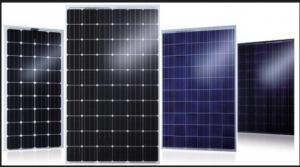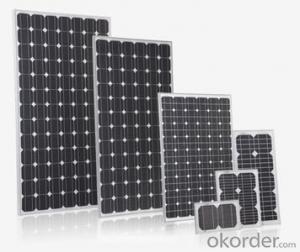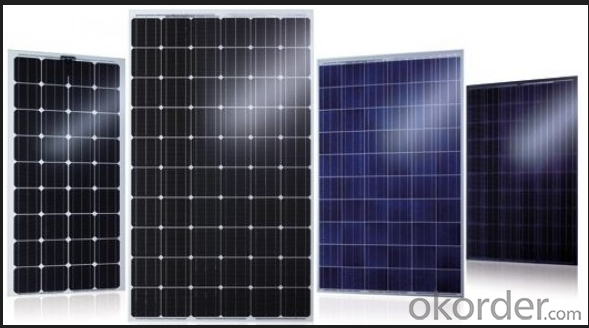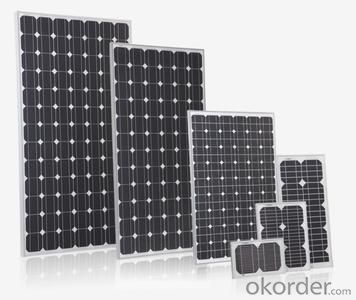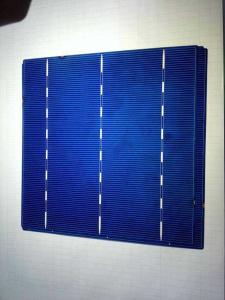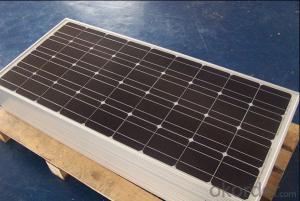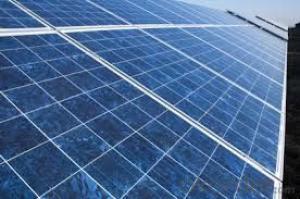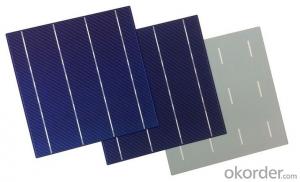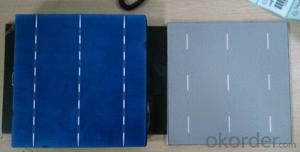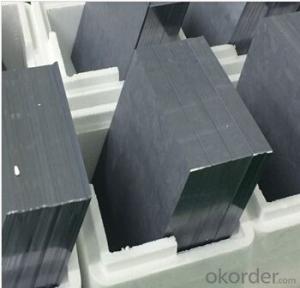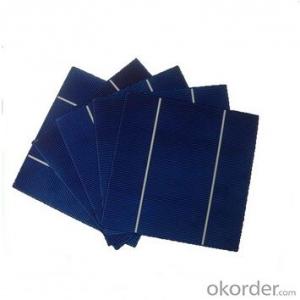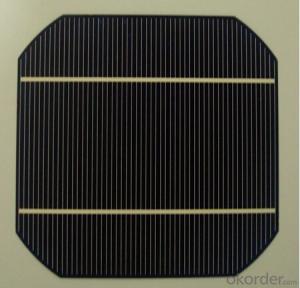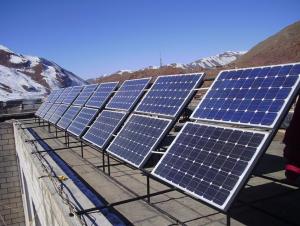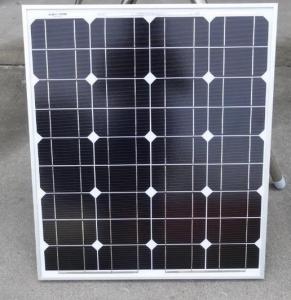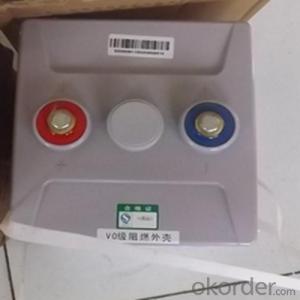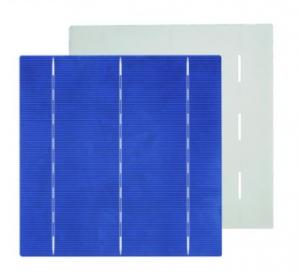Triple Junction Silicon Solar Cell 156mm*156mm with Different Efficiency
- Loading Port:
- China main port
- Payment Terms:
- TT or LC
- Min Order Qty:
- 100 m.t.
- Supply Capability:
- 10000000 m.t./month
OKorder Service Pledge
OKorder Financial Service
You Might Also Like
Description:
CNBM Solar is a world-leading and Vertical integrated manufacturer of high-performance with Silicon,
Wafer, Cells, Modules, which convert sunlight into electricity for residential, commercial, and utility-scale
power generation.
The capacity of CNBMSolar is reach to 1GW, and make sure each year our shipment capacity is more
Than 700-800MWs, at the same time, we have set up the largest solar power station with our partner
in Ukraine.
CNBM is a Quality + Service oriented company with“Excellence at Each Step” approach, composed of
the finest components from TUV and IEC-certified partners around the world, CNBM modules consistently
undergo a variety of trials at the company’s Test & Development Centre, ensuring peak performance
capabilities. The company is committed to develop and provide the world with clean and renewable energy
to ease the energy shortages as well as human kind’s impact on the environment.
Packaging & Delivery
| Packaging Detail: | Typical package for one carton contains 1,200 cells.The cells are sealed in cell box every 100pcs.Gross weight peri unit carton shall be around 17.1Kg. |
| Delivery Detail: | Within 1-2days after received payment |
Specifications
*High efficiency and High power
*Long-term electrical stability
*Best quality
*fast ship
156mm Multi-Crystalline Silicon Solar Cell low price, high efficiency for solar panels/ modules
PHYSICAL
Dimension: 156mm x 156mm ± 0.5mm
TYPICAL ELECTRICAL CHARACTERISTICS
| Efficiency | 1640 | 1660 | 1680 | 1700 | 1720 | 1740 | 1760 |
| Efficiency(min)% | 16.4 | 16.6 | 16.8 | 17.0 | 17.2 | 17.4 | 17.6 |
| Pmax(W) | 3.991 | 4.040 | 4.088 | 4.137 | 4.186 | 4.234 | 4.283 |
| Voc(V) | 0.623 | 0.626 | 0.629 | 0.631 | 0.633 | 0.635 | 0.637 |
| Isc(A) | 8.412 | 8.455 | 8.506 | 8.557 | 8.602 | 8.643 | 8.681 |
| Vmp(v) | 0.515 | 0.517 | 0.520 | 0.522 | 0.524 | 0.526 | 0.527 |
| Imp(A) | 7.750 | 7.814 | 7.862 | 7.926 | 7.988 | 8.050 | 8.127 |
*Data under standard testing conditional (STC):1,000w/m2,AM1.5, 25°C , Pmax:Positive power tolerance.
TYPICAL TEMPERATURE Voltage -2.14 mV/K
COEFFICIENTS Current +4.93 mA/K
Power -0.43 %/K
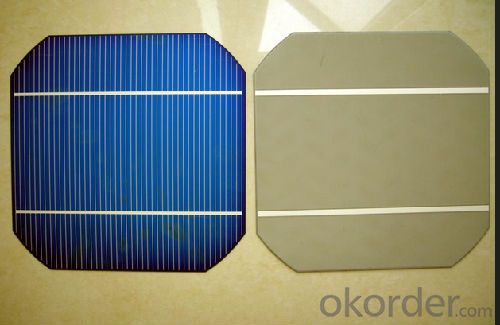
FAQ:How to PACK?
Typical package for one carton contains 1,200 cells.The cells are sealed in cell box every 100pcs.Gross weight peri unit carton shall be around 17.1Kg.
- Q: How many solar cells are there in a solar panel?
- 20?
- Q: Where can I buy the 156x156mm high efficiency poly solar cells assembly?
- You can visit www.globalimporter and find many suppliers who can provide you what you need.
- Q: Can solar cells be used to power medical devices?
- Yes, solar cells can be used to power medical devices. They can convert sunlight into electricity, providing a sustainable and renewable source of power for various medical devices such as portable medical monitors, hearing aids, insulin pumps, and even implantable devices. Solar-powered medical devices are particularly useful in remote or resource-limited areas where access to electricity is limited, ensuring continuous and reliable power supply for critical healthcare needs.
- Q: How do solar cells perform in areas with high levels of air pollution?
- Solar cells perform less efficiently in areas with high levels of air pollution. Air pollution, especially particulate matter and smog, can block sunlight and reduce the amount of light reaching the solar cells. This reduces their ability to generate electricity and can significantly decrease their performance. Additionally, air pollution can settle on the surface of the solar panels, creating a layer of dirt or dust that further reduces their efficiency. Regular cleaning and maintenance are required to ensure optimal performance in such areas.
- Q: What is the solar cell?
- For solar cells formed by the combination of two different silicon semiconductors (P-type and N-type), when the sunlight is irradiated, the solar light is absorbed by the solar cell to produce positive ions (positive holes) and negative ions (electrons) The positive ions are assembled into the P-type semiconductor, and the negative ions are assembled to the N-type semiconductor.
- Q: Can solar cells be used in recreational vehicles (RVs)?
- Yes, solar cells can be used in recreational vehicles (RVs). Installing solar panels on the roof of an RV can provide a sustainable and efficient source of electricity for powering various appliances and devices while on the road. This allows RV owners to reduce their reliance on traditional power sources and enjoy greater freedom and flexibility in their travels.
- Q: How do solar cells perform in areas with high levels of snowfall?
- Solar cells generally do not perform optimally in areas with high levels of snowfall. The accumulation of snow on the surface of solar panels can significantly reduce their efficiency by blocking sunlight and preventing the cells from generating electricity. Regular snow removal or tilting the panels at an angle can help mitigate this issue, but it may still impact their overall performance in such regions.
- Q: What is the role of charge controllers in solar cell systems?
- The role of charge controllers in solar cell systems is to regulate and manage the flow of electricity between the solar panels and the batteries. They prevent overcharging and deep discharge of the batteries, ensuring their longevity and maximizing their efficiency. Additionally, charge controllers protect the solar panels from damage caused by excessive voltage or current.
- Q: Can solar cells be used in museums?
- Yes, solar cells can be used in museums. They can be used to power various devices and lighting within the museum, reducing reliance on traditional energy sources and contributing to a more sustainable and environmentally friendly operation. Additionally, solar cells can be integrated into the design of museum buildings, providing a visually appealing and efficient way to generate renewable energy.
- Q: How does a solar cell work?
- A solar cell works by converting sunlight into electricity through the photovoltaic effect. When sunlight hits the solar cell's surface, the photons (light particles) transfer their energy to the electrons in the semiconductor material within the cell. This energy allows the electrons to break free from their atoms and create an electric current. The separated electrons then flow through the cell's electrical circuit, generating usable electricity.
Send your message to us
Triple Junction Silicon Solar Cell 156mm*156mm with Different Efficiency
- Loading Port:
- China main port
- Payment Terms:
- TT or LC
- Min Order Qty:
- 100 m.t.
- Supply Capability:
- 10000000 m.t./month
OKorder Service Pledge
OKorder Financial Service
Similar products
Hot products
Hot Searches
Related keywords
